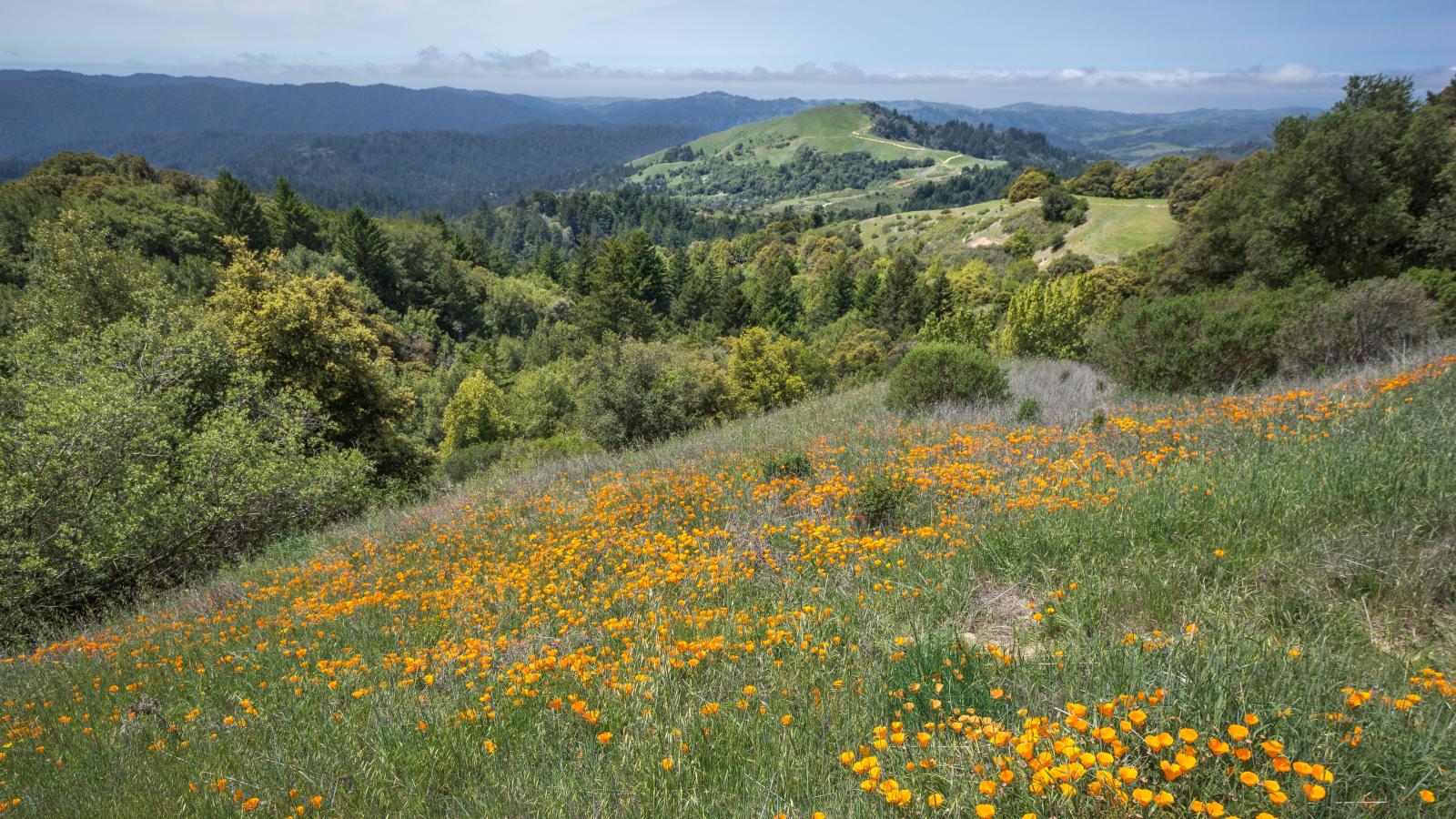Winter 2015-2016
Last month, the Bay Area Open Space Council released Here and Now (www.bit.ly/hereandnowfilm), a short film about the transformative partnerships that four land trust agencies, including Midpen, have forged with Native Americans, our continent’s first caretakers, to help us repair the land and strengthen cultural practices that are beneficial to the earth. This film is part of a growing international movement that recognizes the important link between healthy biodiversity and thriving cultural diversity. In every corner of the world, people have developed cultural practices that strengthen biodiversity and, as a result, have sustaining, mutually beneficial relationships with the land. Nature seems to love diversity, in all its forms. On the other hand, monocultures, both in nature and in humankind, have proven time and again to be not only unsustainable, but often downright destructive.
So what can we do here and now to bridge science and culture, the past and the present, to solve the many ecological problems of today and tomorrow? Interestingly, the answers have been coming to us for years.
When we launched the multiyear Vision Plan process, hundreds of people told us that nature not only helped them lead fuller lives, but also strengthened their connections with neighbors, coworkers, friends, family members, and even with a higher power. Their vision for open space was one in which land agencies built and sowed connections between people through nature. They asked for:
- Youth outreach and education
- Greater use of technology to reach new audiences
- Places where people of all ages, abilities, and backgrounds can learn about nature together
- Outreach to underserved communities
In essence, they wanted all members of the community to lead fuller, happier, and healthier lives as individuals and as groups through a meaningful connection with nature. The end result of their vision would be a culture that values and sustains the earth.
A similar message was reaffirmed last year when a supermajority passed Measure AA. Within that supermajority, the areas with the highest level of support for the measure were also the most culturally and racially diverse areas within the district, often by a very wide margin. Clearly, the love and appreciation for open space exists in every part of our district and is expressed in many ways, and we are keeping our promise as part of Measure AA and the Vision Plan to expand outreach into our communities.
So what are we at Midpen doing to bridge science and culture to strengthen these connections? One of our strategies is to go into communities. Over the last three years, we’ve greatly expanded our community outreach program and are now offering and leading outreach activities for Latinos, African Americans, Asian Americans, South Asian Americans, immigrants, and many others. This year, for the first time, we’ve connected with farmworker families on the Coastside, the South Asian community through the Hindi Diwali celebration, African Americans through the annual Soul Stroll health walk, and Latino communities through schools and nonprofits. We’re working with health providers to connect with people of a wide range of abilities and ages. Our outreach materials — already available in English, Spanish, Chinese and Korean — are now being developed for families and for the accessibility community.
This year, our tremendous volunteer and docent force is more culturally diverse than it has ever been, with greater language ability and an ever-growing community outreach volunteer corps.
Organizationally, we’re expanding our cultural knowledge base and expertise by supporting research grants to local colleges and universities that:
- Identify ethnobotanical sites, experiment with traditional management practices, and collect plant materials for traditional use by the Amah Mutsun Tribal Band
- Study archeological sites to predict and survey locations of former Native American land use
- Survey archeological sites in Sierra Azul to provide information on Native American period use
To connect with future generations, we’re working with children and youth from underserved communities to create connections with the land through service, recreation, outdoor education, and career exploration.
Through our outreach, research, and programming, our goal is not to impart a single worldview of nature, but to seek out and strengthen the many ways that people love and care for the earth; that is the surest path to becoming better stewards of the land. There is no better place to take such a journey than here, in our region with its incredible human and biodiversity, where people care deeply about nature and open space and embrace the love of learning and believe all things are possible.

Stephen E. Abbors
General Manager

